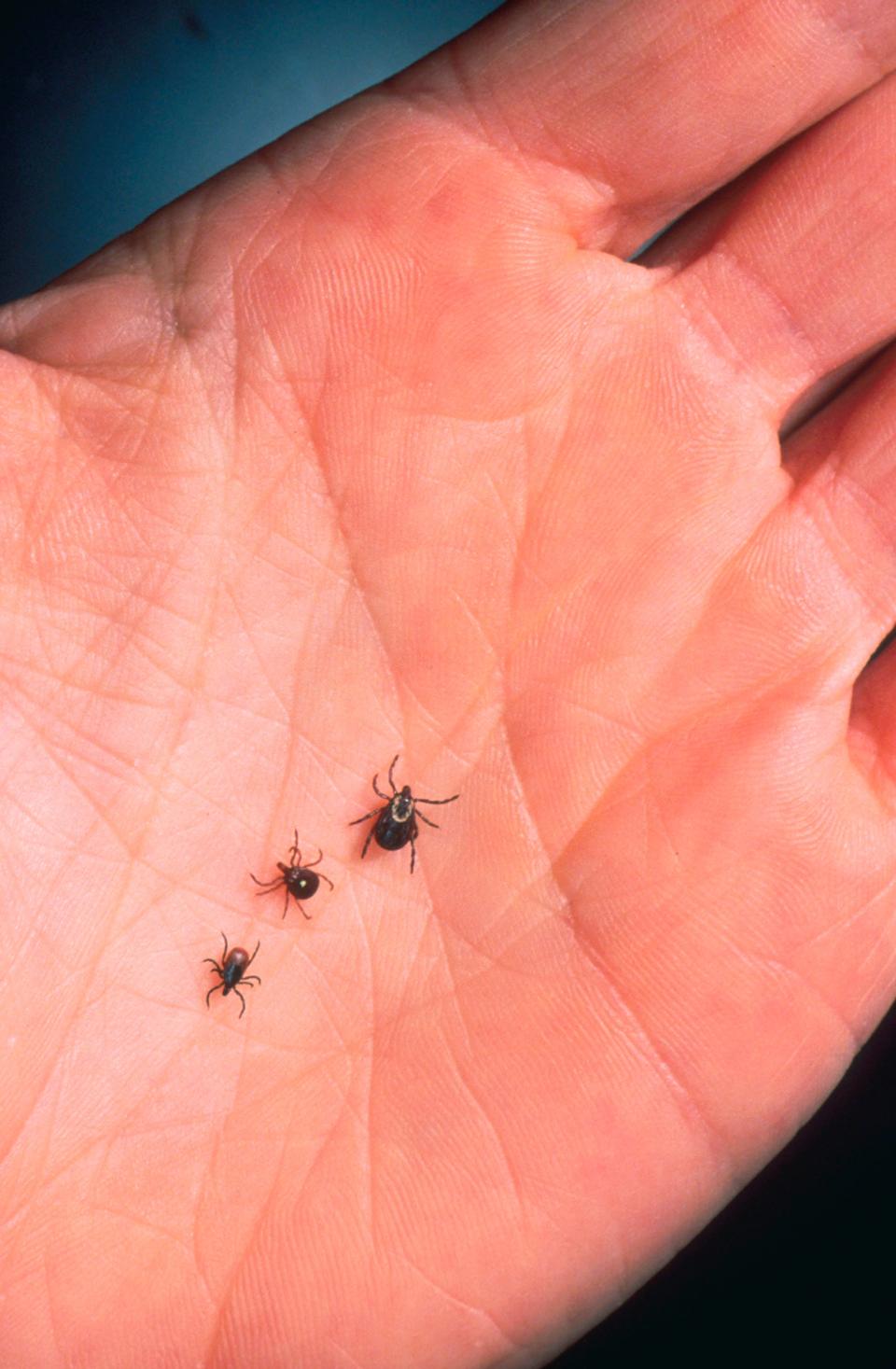Lyme disease is becoming a bigger problem. Which states have the most cases?
Hiking and camping fanatics know all too well the risks of a tick bite.
Ticks are tiny but carry mighty illnesses, including Lyme disease. They thrive in heavily wooded areas across the U.S. and although there's greater risk in the northeast, the Midwest and the Mid-Atlantic regions, cases of tick-borne diseases are reported in every state in the nation.
In 2022, the number of people diagnosed with Lyme disease in the U.S. increased to 62,551, according to the U.S. Centers for Disease Control and Prevention. In the previous decade, infections averaged about 33,000 a year.
Lyme disease is the most common disease transmitted through tick bites, according to the CDC. Here is what you need to know about the most prevalent tick-borne illness:

These states have higher rates of Lyme disease infection
Although Lyme disease infections were close to 63,000 in 2022, the CDC estimates that the number of people who have contracted the often hard-to-diagnose illness could be as much as 10 times higher than reported cases.
Some states see a much higher number of infections than others. The following states have the highest infection rates of Lyme:
Unable to view our graphics? Click here to see them.
With climate change raising temperatures, tick populations have expanded into new regions and put more people in contact with ticks and their illness-causing bacteria.
Annual cases are expected to continue to climb.
"Deer ticks are mostly active when temperatures are above 45 degrees Fahrenheit, and they thrive in areas with at least 85% humidity," according to the U.S. Environmental Protection Agency. "Thus, warming temperatures associated with climate change are projected to increase the range of suitable tick habitat."
Map shows which counties have reports of Lyme disease
Of any state, Rhode Island, Vermont and Maine had the highest rate of reported Lyme disease in 2022. The number of reported cases in Rhode Island was 212 per 100,000 people − the highest of any state that year. Vermont reported 204 cases per 100,000 residents and Maine reported 194.7 cases per 100,000, according to the CDC.
See if your county had reports of Lyme disease within the past five years:
Seven of the 10 counties most affected by Lyme disease were all located in Pennsylvania between 2016 and 2019. During that same time period, Pennsylvania was home to nearly 30% of all reported Lyme disease cases, followed by New Jersey with 12% of all cases, according to USAFacts, a nonprofit that provides analysis on U.S government data.
Spotting a Lyme disease-carrying tick
The blacklegged tick and Western blacklegged tick can spread Lyme disease, which can lead to a wide range of health problems.
In high-risk areas, an estimated 10% to 50% of blacklegged ticks carry the bacteria that causes Lyme.
These high-risk areas include:
Eastern states, primarily New England and the mid-Atlantic.
The Great Lakes Region and northern Midwestern states, especially Wisconsin and Minnesota
West Coast, particularly parts of northern California and less commonly, Oregon and Washington
Hallmark symptoms of Lyme disease in the acute stage include a “bullseye” rash, (erythema migrans), fever, chills, fatigue, and muscle and joint aches.
Without treatment, Lyme disease can progress to include neurological, heart, and joint problems.
Is Lyme disease curable? Here's what you should know about tick bites and symptoms.
Where are ticks found? Maps show where the disease-carrying parasites live
How to stay safe from tick bites
The CDC and other public health experts recommend the following to keep you and your family safe from ticks
When spending a significant time outdoors, treat clothing and gear with products that have .5% permethrin or buy such items already pre-treated with permethrin.
Consider long pants and high socks in favor of shorts.
Avoid high grass and leaf litter. On hikes, try to walk in the center of trails.
Inspect clothing and gear periodically for the presence of ticks.
To learn how to properly remove a tick if it's attached to skin, go here.
To learn more about tick-born illnesses, read USA TODAY reporting on where the parasites live.Contributing: Delaney Nothaft
This article originally appeared on USA TODAY: Lyme disease map: Which states have the most cases as illnesses rise


